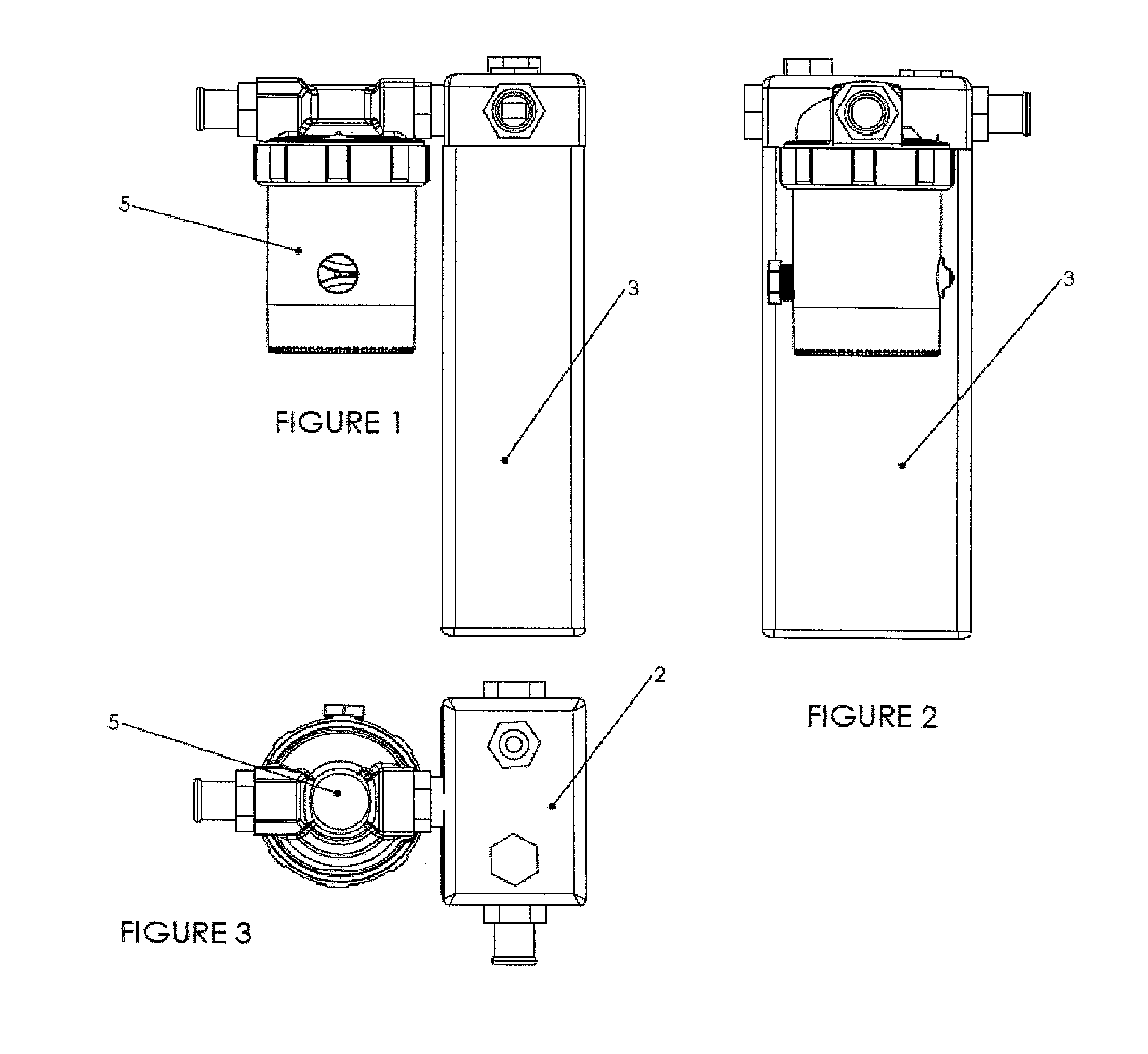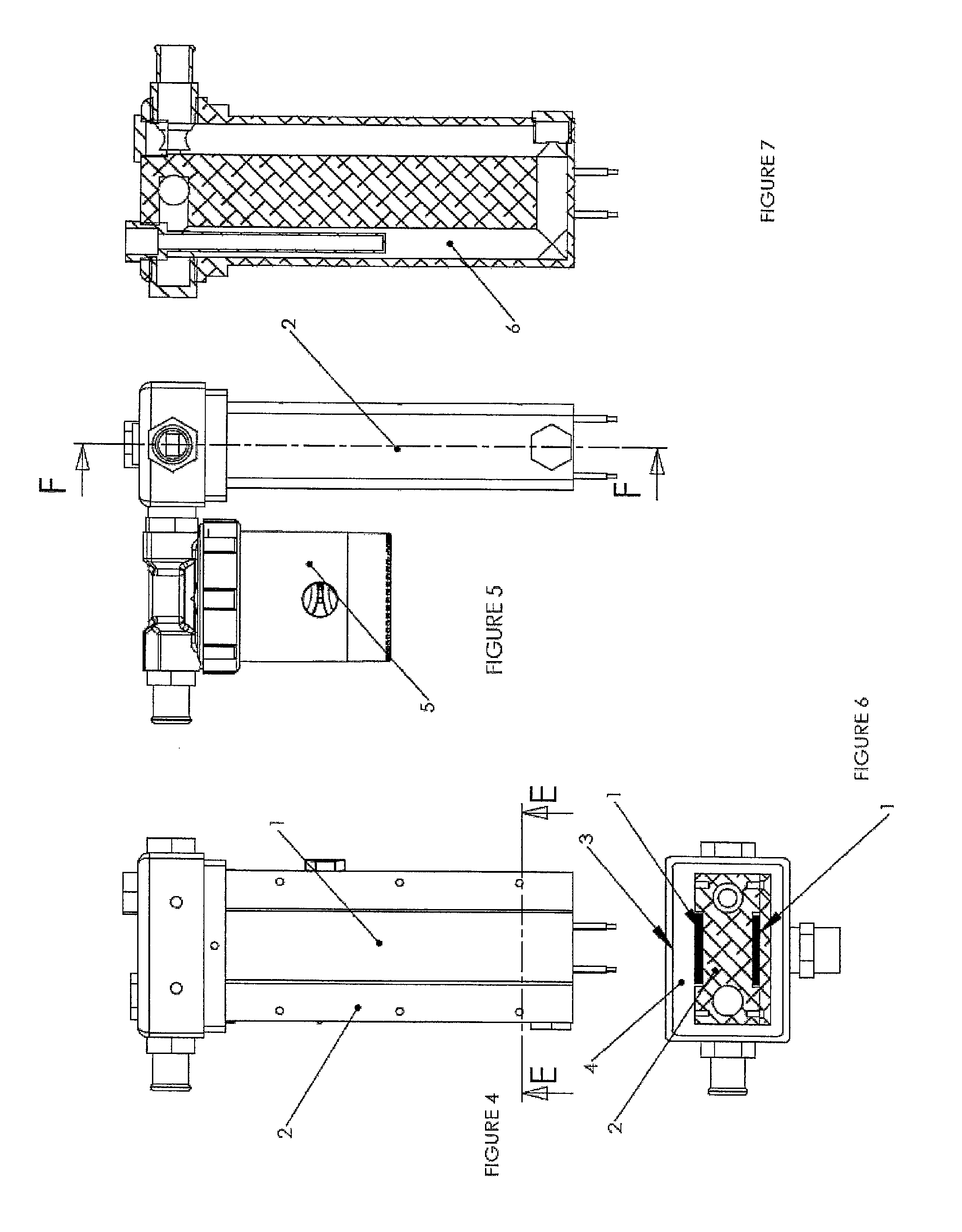Device for preheating a fluid, notably a combustion engine coolant fluid
a technology for heating fluids and combustion engines, applied in engine starters, sustainable manufacturing/processing, lighting and heating apparatus, etc., can solve the problems of low heat exchange efficiency, low specific charge per cmsup>2 /sup>, and difficult placement on circuits to allow heat circulation. , to achieve the effect of reducing the loss at the atmosphere, increasing the efficiency of heat exchange, and optimizing the thermal yield
- Summary
- Abstract
- Description
- Claims
- Application Information
AI Technical Summary
Benefits of technology
Problems solved by technology
Method used
Image
Examples
Embodiment Construction
[0046]The fluid heating or preheating device shown in FIGS. 1 to 3 essentially comprises a heating body wrapped with an insulating cap 3 and a circulation pump 5. The heating body is generally elongated and has a generally rectangular section. It comprises a fluid inlet at its upper end, and an outlet disposed at the level of the inlet and oriented at about 90°, connected directly to the circulating pump 5.
[0047]FIGS. 4-7 illustrate the body of the heating device, free of its insulation cap 3. It can be seen that it comprises a solid element 2 of a generally rectangular section and extending in length. This is preferentially a block made of a metallic heat conducting material such as aluminum. As is clearly visible in FIGS. 6 and 7, it is drilled on a large part of its length from its top face to near its bottom face, and this two times in two parallel directions. These two vertical drill holes are thus arranged near the ends of the rectangular section of the solid element. Each of ...
PUM
 Login to View More
Login to View More Abstract
Description
Claims
Application Information
 Login to View More
Login to View More - R&D
- Intellectual Property
- Life Sciences
- Materials
- Tech Scout
- Unparalleled Data Quality
- Higher Quality Content
- 60% Fewer Hallucinations
Browse by: Latest US Patents, China's latest patents, Technical Efficacy Thesaurus, Application Domain, Technology Topic, Popular Technical Reports.
© 2025 PatSnap. All rights reserved.Legal|Privacy policy|Modern Slavery Act Transparency Statement|Sitemap|About US| Contact US: help@patsnap.com



